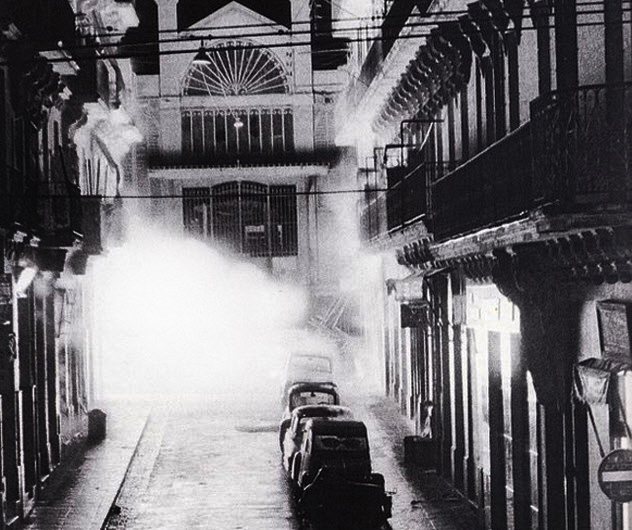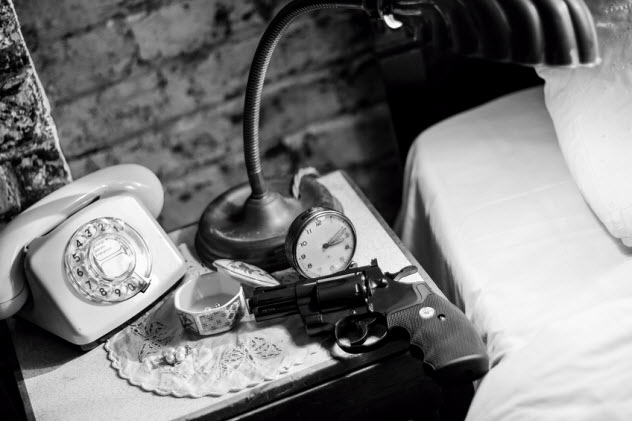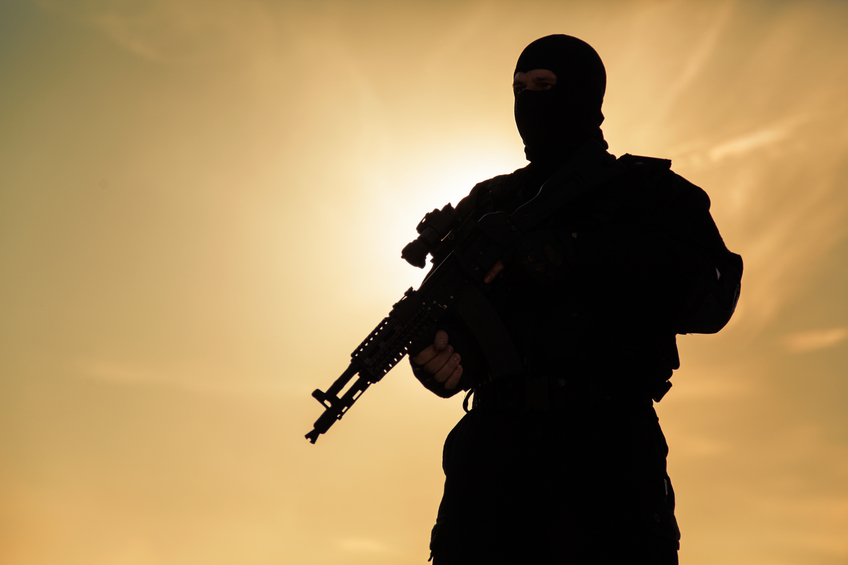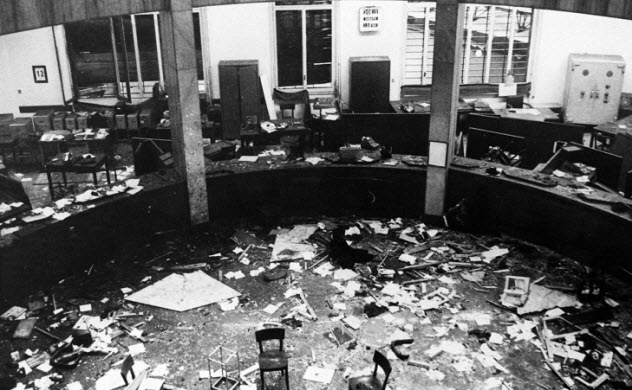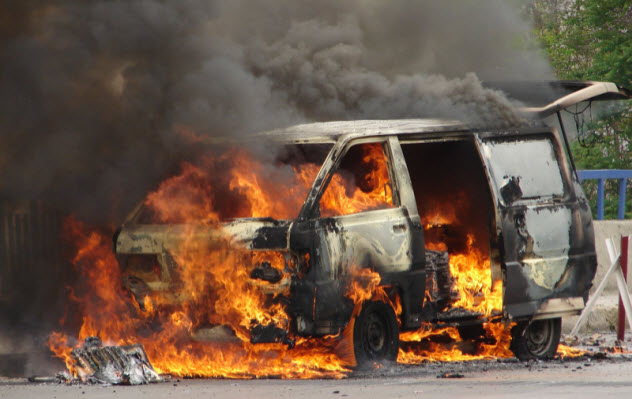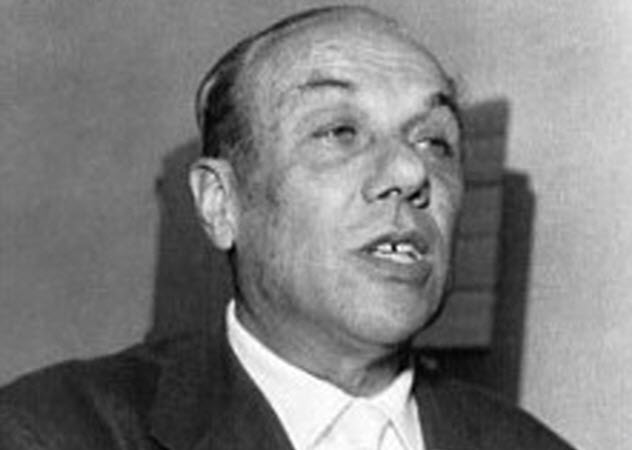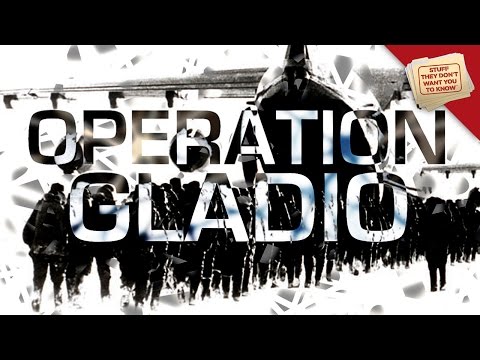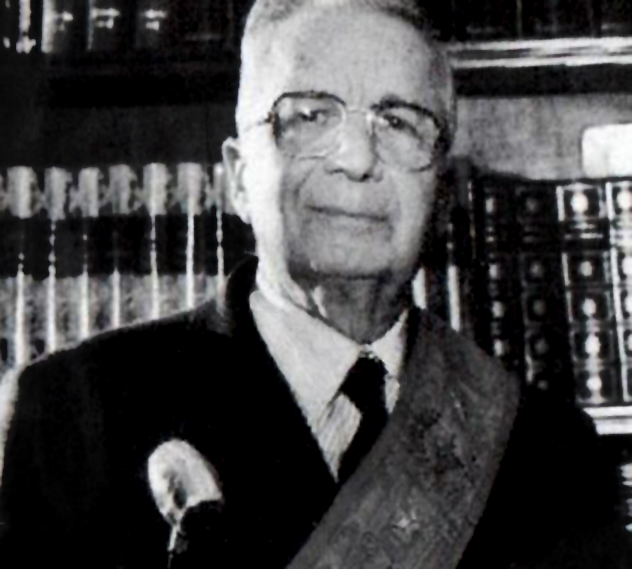In fact, Vinciguerra’s bomb was just one of a number of terrorist attacks carried out by a bewildering array of right-wing movements and front groups with the evident support of the Italian security services. The aim was to undermine support for democracy and discredit the communists and anarchists who would be blamed for the atrocities. The exact details of this conspiracy remain shadowy, but the basic outline of the strategy of tension is now clear, as are the names of a number of the groups involved.
10The OAS
In the early 1960s, a mysterious French terrorist arrived in Portugal. His real name was Yves Guillou, but he usually went by a pseudonym, most commonly Yves Guerin-Serac. He had chosen Portugal because he admired its authoritarian government, which was waging a bloody war against the independence movements in its African colonies. Tens of thousands would die before the fascists were overthrown in 1974 and the new government agreed to independence for Mozambique, Angola, and Guinea-Bissau. This African bloodshed appealed to Guerin-Serac, who had been radicalized during France’s own disastrous colonial conflict in Algeria. Marked by horrendous brutality on both sides, the Algerian War killed hundreds of thousands and badly destabilized France. But the large European population in Algeria was determined to preserve the status quo and was horrified when President Charles de Gaulle announced a referendum on the issue, which produced large majorities for independence in both Algeria and France. In response to this democratic betrayal, a group of right-wing Franco-Algerians formed the OAS (Organisation de l’Armee Secrete), which virtually took control of the European enclaves in Algiers and Oran and launched a series of terrorist attacks in France and Algeria, including multiple attempts to assassinate de Gaulle. As independence approached, the OAS oversaw a “frenzy of violence,” killing at least 2,360 people in the 15 months up to June 1962. A decorated veteran of 1950s wars in Korea and Indochina, Guerin-Serac became an enthusiastic member of the OAS. But he wasn’t ready to give up terrorism after the organization collapsed in 1962: “The others have laid down their weapons, but not I. After the OAS, I fled to Portugal to carry on the fight and expand it to its proper dimensions—which is to say, a planetary dimension.”
9Aginter Press
In Portugal, Guerin-Serac founded Aginter Press, supposedly a news agency along the lines of Reuters or the Associated Press. But this was simply a cover to allow Aginter’s operatives to travel freely. In reality, Aginter was a fascist paramilitary organization aimed at fighting communism around the globe. The group was openly hostile to democracy, which it viewed as weak, and developed the belief that false-flag terrorist operations could be a useful way of undermining the left and strengthening the extreme right. An internal document summed up Aginter’s key beliefs: The first phase of political activity ought to be to create the conditions favoring the installation of chaos. [ . . . ] In our view, the first move we should make is to destroy the structure of the democratic state under the cover of communist and pro-Chinese activities. [ . . . ] Moreover, we have people who have infiltrated these groups and obviously we will have to tailor our actions to the ethos of the milieu—propaganda and action of a sort which will seem to have emanated from our communist adversaries.
8Ordre Et Tradition
These goals attracted the support of Portugal’s dictatorship, and the Portuguese secret police (PIDE) were said to have provided Aginter with millions in funding. The CIA also contributed, and the “press agency” soon spread its tentacles beyond Portugal. According to the Italian sociologist Franco Ferraresi, Guerin-Serac developed a formidable private spy network in Europe and southern Africa. By the late 1960s, this was “equal to, if not better than, the secret service of a medium-sized country.” Aginter also recruited right-wing mercenaries to fight in colonial wars in Africa and ran training camps for counterinsurgency and antiguerilla warfare. At some point, this training came to include “covert action techniques” like bomb-making, assassination, and propaganda. Operatives trained by Aginter have been linked to the assassinations of African freedom fighters Eduardo Mondlane and Amilcar Cabral and Portuguese general Humberto Delgado. (However, plausible alternative theories exist for all three murders.) After 1969, Aginter shifted its focus from Africa to Europe. Guerin-Serac established a subsidiary known as “Ordre Et Tradition” that could advocate politically without blowing the press agency’s cover. Aginter also produced radio propaganda and successfully infiltrated the European far left via the Parti Communiste Suisse/Marxiste-Leniniste. Most sinister of all, Aginter set up an ultrasecret cell within Ordre Et Tradition. Known as the Army Organization Against International Communism (Organization Armee contre le Communisme International), it was to specialize in “provocation and infiltration.”
7Organization Armee Contre Le Communisme International
The OACI was intended to be a global paramilitary force, and its operatives did turn up in a number of Cold War hot spots. For example, the American Jay Sablonsky (aka Jay Salby) was trained by Aginter before leading anticommunist death squads in Guatemala. However, the OACI mostly achieved notoriety in Italy. According to historian Giuseppe de Lutiis, the OACI held courses in bomb-making, sabotage, and covert operations—essentially terrorist training lessons—attended by figures from the Italian extreme right wing. The OACI also sought to develop a doctrine to justify terrorism, with one document explaining that “terrorism breaks down resistance, obtains submission, and provokes a breach between the populace and the authorities.” It distinguished between “selective terrorism: breaking down the political and administrative machinery by eliminating its cadres [and] blind terrorism: smashing the people’s trust by disorganizing the masses, the better to manipulate them.” Franco Ferraresi has noted that these OACI documents are very similar to later writings by Italian right-wing terrorists. Many of these terrorists, including the notorious Stefano delle Chiaie, were members of the OACI. In this way, Aginter Press came to serve as the intellectual parent of paramilitary groups like Ordine Nuovo, which would terrorize Italy during the infamous “Years of Lead.”
6Ordine Nuovo
In April 1969, two bombs detonated in crowded areas of central Milan, injuring dozens. By a miracle, nobody was killed and the police quickly rounded up a number of anarchists suspected of involvement. In August, near-simultaneous bombs exploded on 10 trains. Again, miraculously, no one was killed. In December, Italy’s luck ran out. A huge bomb ripped through the Piazza Fontana in Milan, killing 17 and wounding 90. Later that day, three bombs went off in Rome, injuring 17. Again, left-wing extremists were the prime suspects. The police arrested an anarchist railway worker named Giuseppe Pinelli, then claimed that he had committed suicide by throwing himself out of a window in the police station. (An autopsy later determined that he was already either dead or unconscious when he fell from the window.) All of Italy was outraged at the leftist atrocities. But as time went by, evidence emerged that the 1969 bombings had actually been committed by right-wing extremists who hoped to discredit the Italian left. Suspicion particularly fell on the Ordine Nuovo (ON), a far-right paramilitary movement founded by Pino Rauti, who had worked as a journalist for Aginter Press. In 1986, a right-wing extremist named Guido Giannettini, who had cofounded the OACI with Yves Guerin-Serac, was convicted of planning the bombing, but he was released on appeal. A year later, ON members Franco Freda and Giovanni Ventura were convicted of the April and August 1969 bombings but acquitted of the Piazza Fontana blast for lack of evidence. In 1994, an electrician testified that he had acquired bomb timers for members of Ordine Nuovo but had been frightened to come forward because Pino Rauti had personally threatened his life. Three ON members were convicted of the bombing in 2001 but again were released on appeal. In 2004, a court found that Freda and Ventura had indeed committed the Piazza Fontana bombing, but Italian law prevented them from being retried because they had been acquitted of the crime in 1987. Although it is now clear that ON members planted the bomb, nobody is currently in jail for the Piazza Fontana massacre.
5Avanguardia Nazionale
The Piazza Fontana bombing marked the beginning of the strategy of tension, in which right-wing Italian organizations evidently carried out terrorist attacks with the aim of discrediting Italian communists and anarchists. To make matters worse, communists and anarchists genuinely did start carrying out terrorist attacks, although they tended toward targeted assassinations and kidnappings rather than random bombings of civilians. As a result, the period came to be known in Italy as the Years of Lead. The strategy of tension closely mirrored Aginter’s call for false-flag activities aimed at damaging far-left groups and undermining the legitimacy of the democratic state. And there can be little doubt of Aginter’s influence. Magistrate Guido Salvini told the Italian Senate that “data has emerged which confirmed the links between Aginter Press, Ordine Nuovo, and Avanguardia Nazionale. [ . . . ] It has emerged that instructors of Aginter Press came to Rome between 1967 and 1968 and instructed the militant members of Avanguardia Nazionale in the use of explosives.” The Avanguardia Nazionale was an offshoot of the Ordine Nuovo founded by Stefano delle Chiaie, who had proved too radical even for Rauti’s organization. Delle Chiaie is widely suspected of masterminding a number of terrorist attacks and was almost certainly involved in the Piazza Fontana bombing in some capacity. He admitted that “we acted against the communists and against the bourgeois state, against the democracy, which deprived us of our liberty. And thus we had to use violence.” Like Giannettini, delle Chiaie had strong links to Aginter Press, which he claimed to have cofounded: “Together with a French friend of mine (Guerin-Serac), I decided to establish the press agency Aginter Press in order to be able to defend our political views.”
4La Rosa Dei Venti
Even among far-right extremists, there was some dispute as to what the ultimate aim of the strategy of tension should be. Relative moderates felt that the goal should be a stronger presidency and the suppression of the Communist Party. Radicals wanted the restoration of Fascism. That sounds ludicrous now, but at the time, Italy was virtually the only democracy in southern Europe. If Greece, Spain, and Portugal could have right-wing dictatorships, then why not Italy? It has since become clear that such a putsch was almost attempted in 1970 when various extremists, including Stefano delle Chiaie, planned to overthrow the government and install Prince Valerio Borghese as dictator. A senior military commander under Mussolini, “the Black Prince” would read a statement declaring that “the political formula that has governed us for 25 years and brought us to the verge of economic and moral collapse has ceased to exist.” Meanwhile, his supporters would occupy various government buildings and the RAI TV studios. For reasons that have never become entirely clear, the coup was called off at the very last minute. (Delle Chiaie’s unit was already inside the Interior Ministry when the plan was canceled.) Most likely, the plotters realized that the attempt was doomed and got cold feet, although alternative explanations range from a personal intervention by Richard Nixon to the presence of a Soviet fleet in the Mediterranean. But the fallout from the abortive coup led to an investigation of a far-right organization known as the Rosa dei Venti (“the Compass Rose”), which brought together several extremist groups and was a key source of support for Borghese. In 1974, an Italian magistrate sensationally ordered the arrest of General Vito Miceli, the head of the Italian SID spy agency after determining that he was a key member of the Rosa dei Venti.
3SID
The role of the Italian intelligence services might be one of the most shocking aspects of the strategy of tension. Many of Italy’s top intelligence officers were close to the extreme right-wing groups that carried out the attacks and repeatedly helped to cover them up. For example, SID helped OACI cofounder Guido Giannettini flee the country after he came under suspicion for the Piazza Fontana bombing. The agency also repeatedly obstructed investigations into right-wing terrorist attacks and tried to help Giovanni Ventura escape from prison. In 1980, the police searched the apartment of General Gianadelio Maletti, who followed Vito Miceli as head of SID. They found a file dated 1975 that referred to an Ordine Nuovo member who had contacted the police in Padua: “Casalini wants to ease his conscience. He started to admit having taken part in the 1969 attacks. [ . . . ] [He] will speak again and is already picking on others, the Padua group + delle Chiaie + Giannettini. He is stating they were all certain of the support of the SID.” The letter concluded with instructions to contact the police and have the case shut down before Casalini could be interviewed again. The cooperation of the intelligence services and selected members of the Carabinieri police force was vital in ensuring that left-wing militants were blamed for the attacks. Two fairly straightforward examples stand out. In 1972, Vincenzo Vinciguerra’s car bomb killed three police officers. Senior intelligence and military officers falsified leads and “anonymous confessions” implicating the far-left Lotta Continua organization. A general and five other officers were eventually charged with obstruction of justice for this. In 1973, a man named Gianfranco Bertoli threw a grenade into a ceremony honoring police commander Luigi Calabrese, who had been murdered by leftists in revenge for his alleged role in the death of Giuseppe Pinelli, the anarchist who “fell” from a police station window after the Piazza Fontana bombing. Bertoli confessed that he was an anarchist, and SID produced a report confirming this. Yet investigators subsequently discovered that Bertoli had been indoctrinated by the Ordine Nuovo, which had planned the attack.
2Nuclei Armati Rivoluzionari
As the 1970s wore on, the political situation began to grow less friendly for the extremists. Portugal’s dictatorship was overthrown in 1974, forcing Guerin-Serac and his Aginter operatives to flee to Franco’s Spain. There, they used their experience in false-flag operations to bomb a number of Algerian embassies with the goal of discrediting the Algerian opposition. Meanwhile, Stefano delle Chiaie also fled to Spain, where he was involved in the massacre of left-wing protestors. However, Franco died in 1975 and his fascist regime crumbled shortly afterward, removing the last European safe haven for the remnants of Aginter. Guerin-Serac seems to disappear from the record after this, but presumably, he went to South America. Delle Chiaie certainly did, even setting up a Chilean press agency clearly modeled after Aginter. He ended up in Bolivia, where he seems to have worked as an assassin for the Nazi fugitive and drug dealer Klaus Barbie. The pair were key players in the “Cocaine Coup” that overthrew the government of Bolivia in 1980. Fortunately, this shortly collapsed and both were eventually extradited to Europe. Meanwhile, other groups arose to continue the strategy of tension in Italy, although this became increasingly divorced from any realistic attempt to frame communists for the atrocities. In 1980, a right-wing group called Nuclei Armati Rivoluzionari detonated a time bomb at Bologna’s Central Station, killing 85 and wounding hundreds in the deadliest right-wing attack of the Years of Lead.
1Gladio
At the end of World War II, the United States became concerned about the possibility of a Soviet invasion of Western Europe. In the late 1940s, NATO decided to create “stay-behind” networks of agents in most European countries. These agents would be supplied with money and weapons to prepare resistance operations to be launched in the event of a Soviet invasion. In Italy, this plan was known as Operation Gladio. Watch this video on YouTube Unfortunately, the Gladio network wasn’t content to wait around for a Soviet invasion. The CIA recruited heavily among anticommunist fanatics, including fascists, who quickly shifted focus to fighting perceived Soviet infiltration. Weapons and explosives supplied for Gladio wound up in the hands of Ordine Nuovo, and other fascist groups and figures associated with Gladio became involved in the strategy of tension. In fact, the first public mention of Gladio in Italy seems to have come during the trial of Vincenzo Vinciguerra in 1984, when the terrorist informed the court that: There existed a structure, occult and hidden, with the capacity of giving a strategic direction to the outrages. [ . . . ] There exists in Italy a secret force parallel to the armed forces. Composed of civilians and military men, in an anti-Soviet capacity, to organize a resistance on Italian soil against a Russian army. The exact role of the CIA in the right-wing terror campaign in Italy remains a matter of enormous controversy. The Swiss historian Daniele Ganser claimed that the agency played a key role in the strategy of tension. However, Ganser’s work has come in for substantial criticism, including the use of documents evidently forged by the Soviets. In any case, it’s questionable whether the anti-American Ordine Nuovo would have taken orders from the agency. The Italian historian Aldo Giannuli has rejected claims that Gladio was linked to terror attacks, instead focusing on a parallel organization called the Nuclei for the Defense of the State. This was under the direction of the Italian army and supposedly had a similar role to Gladio. However, Giannuli argues that the Nuclei soon came to focus on fighting the internal threat of communism, leaving Gladio to focus on the external threat of a Soviet invasion. In this capacity, the Nuclei came to function as a sort of a parental organization for a number of fascist terror groups. As it was under Italian direction, the exact roles, if any, of the Americans and Gladio in the Years of Lead remain unclear.
+Propaganda Due
An interesting aspect to the strategy of tension is the potential involvement of the Propaganda Due (P2) lodge. Sensationally uncovered in 1981, the P2 was a Masonic lodge containing three cabinet ministers, 43 members of parliament, the heads of all three Italian intelligence agencies, 213 other senior military officers, and senior figures in the media and business worlds. It has been described as a “state within a state” and accused of attempting to subvert the Italian government. Although probably not directly involved in planning the attacks, the lodge does seem to have helped cover them up. A more detailed look at the P2 and their possible role in the Bologna bombing can be found here.
